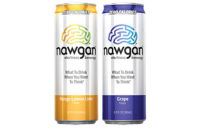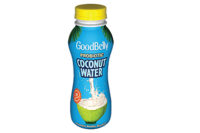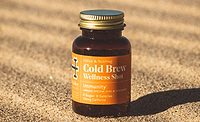Although consuming something that’s alive might sound like a challenge from NBC’s “Fear Factor” TV show, probiotic beverages introduce consumers’ digestive systems to beneficial live cultures in a more appetizing way. For example, kefir, kombucha and probiotic juice-type drinks help consumers attain their daily dose of gut health with a fruity or herbal taste. By drinking these beverages, consumers also take in probiotics that replenish the organisms in their gastrointestinal systems that modulate their bodies and prevent infections, reports the Council for Agricultural Science and Technology, Ames, Iowa.
Probiotics are live microorganisms that, when administered in an adequate amount, confer a health benefit on the host, which, in this case, is the human consumer, states the International Scientific Association for Probiotics and Prebiotics, Sacramento, Calif. Most commonly, probiotics are associated with digestive health benefits in addition to improved tolerance of lactose, according to the California Dairy Research Foundation, Davis, Calif. Some probiotic strains can support inflammatory responses, skin care and a healthy metabolism, which can help fight obesity, adds Michael Bush, senior vice president of Ganeden Biotech Inc., Mayfield Heights, Ohio. However, in order to offer full health benefits to a human, the probiotics must be alive at the time of consumption, the Council for Agricultural Science and Technology notes.
This “lively” status also plays into consumers’ interests in natural and organic products. “The fact that probiotics are ‘alive’ takes natural and organic to a new level of sophistication,” says Sam Wright IV, chief executive officer of The Wright Group, Crowley, La. The Wright Group’s Hereditum probiotics line includes probiotics isolated from human breast milk and goat’s milk, he explains.
While many probiotic strains are available, the challenge for beverage-makers is to find one that is resilient enough to survive the manufacturing process to deliver science-backed health benefits to the consumer, Ganeden’s Bush points out. Some probiotics, like Lactobacillus and Bifidobacterium, are susceptible to breaking down under regular manufacturing conditions, he notes.
Ganeden offers its GanedenBC30 Bacillus coagulans GBI-30, 6086, probiotic strain, which naturally contains a spore, or layer of organic material, that protects the bacteria’s genetic core throughout the manufacturing process and shelf life until the bacteria travels to the consumer’s stomach and intestines following consumption, he explains. Once there, the probiotics germinate to produce the beneficial effects, such as supporting the immune system at 500 million colony-forming units (CFUs) a day and supporting the digestive system at 1 billion CFUs a day when combined with a healthy lifestyle, he says.
These qualities, therefore, enable GanedenBC30 to survive the formulation process, life in a retail environment, and low-pH environments in the human stomach, Bush says. In turn, this opens up the functional ingredient to a wider range of beverages. At this point, GanedenBC30 is the only probiotic able to survive the high-pressure processing (HPP) and K-Cup manufacturing processes, he says.
“We believe that the future of probiotic ingredients in beverages lies in the basics, such as juice, tea, coffee and milk,” Ganeden’s Bush says. “Consumers typically want to feel as though the beverages they consume are normal parts of diets versus ‘frankenfoods’ that have been designed in a lab somewhere. … Consumers are decreasingly interested in taking another pill; they want to receive the benefits of probiotics while consuming something that they already love and without having to adjust their daily routine.” He also notes that the prebiotics industry has seen the most growth in products that are marketed toward children, athletes, moms and active seniors.
According to The Wright Group’s Wright, the global market for probiotic products now is approximately $35 billion, which is about the size of the U.S. dietary supplement market. Ganeden’s Bush adds that the probiotic market is “growing immensely, with no indication that it will be slowing down anytime soon.” By 2015, the market is expected to reach $32 billion globally, with about $30 billion of that from the sale of functional foods and beverages, as consumers learn more about probiotics and their benefits, he says. At present, approximately 80 percent of consumers know what probiotics are and associate them with health benefits, he adds.
Weighing the pros and pre-s
By comparison, most consumers don’t understand the difference between probiotics and prebiotics, notes Carol Lowry, senior food scientist at Minneapolis-based Cargill. “I think most consumers confuse prebiotic and probiotic,” she says. “Probiotics have been explained to consumers enough that they understand it; they know that they’re beneficial, [but] they may not know why. … [But] if you ask consumers what the two are, I would say 99 percent of them couldn’t distinguish between the two.”
Prebiotics are, in a way, the food for probiotics, according to Deborah Schulz, specialty carbohydrates product line manager at Cargill. While probiotics are live cultures, prebiotics are a type of fiber that breaks down in the gut, and the bacteria in the gut creates short-chain fatty acids in the fiber that feed the probiotic bacteria, Cargill’s Lowry explains.
Like probiotics, prebiotics offer digestive health benefits, including modulating gut microbiota, reducing diarrhea incidence, improving gut health, eliminating allergies and preventing infections, says Satya S. Jonnalagadda, director of nutrition at Kerry Ingredients and Flavors, Beloit, Wis. Fiber, in general, also is associated with blood cholesterol reduction, blood glucose reduction and laxation, Cargill’s Lowry adds.
Unlike probiotics, however, prebiotics and other fiber ingredients are not living organisms, but beverage-makers do need to take the beverage’s attributes into account when formulating with these ingredients, experts note. For example, short-chain fibers are not stable in acidic beverages, because the acidic environment breaks down the fiber’s bonds, resulting in individual fructose units and less fiber, Cargill’s Lowry says. In some cases, this can be overcome by storing the product at refrigerated conditions and keeping its shelf-life short, but these fixes are time and temperature dependent, she notes. In addition, fiber cannot be added to an already carbonated beverage, says Neelesh Varde, senior product manager at Roquette America Inc., Geneva, Ill.
Fiber you can feel
Prebiotics and other fiber ingredients in beverages also have to overcome old stigmas and offer a pleasant consumption experience, says Patrick Luchsinger, marketing manager for nutrition at Westchester, Ill.-based Ingredion Inc. “The old idea of fiber in a beverage may still call to mind powdered drink mixes or thick, nutritional-supplement-type drinks,” he says.
To please consumers, beverage-makers are seeking fiber ingredients that are neutral in taste, texture and color and do not impact processing, says Courtney Kingery, senior product manager for fiber at Tate & Lyle Americas LLC, Hoffman Estates, Ill. Advances in ingredient technology are allowing beverage-makers to add significant levels of fiber to a beverage that still tastes good, Ingredion’s Luchsinger says.
For example, Tate & Lyle’s Promitor Soluble Corn Fiber, which is available in liquid, dry and agglomerated forms, has a transparent color, neutral flavor and high solubility and dispersability for easy formulation, Tate & Lyle’s Kingery says. In addition, the product can qualify a beverage for the “excellent source of fiber” claim, with Promitor Soluble Corn Fiber 85 offering a minimum of 85 percent fiber on a moisture-free basis, she says. Promitor Soluble Corn Fiber 85 also contains less than 2 percent sugar and 1.2 calories per gram, she adds. Plus, because it is stable in low-pH environments, this fiber ingredient can be used to add fiber to fruit juices and sports recovery drinks, she adds.
However, even though advances in ingredient technology enable formulators to add fiber to a wide range of beverages, including fruit juices, sports drinks and enhanced waters, beverage-makers still should consider whether a specific type of fiber-fortified beverage would appeal to the target consumer, Cargill’s Schulz says. For example, nutritional beverages, like weight-loss beverages, are a natural fit for fiber, but juices and functional waters might be a tougher sell, she says. The key will be to position the fiber message appropriately for that audience to communicate the health benefits along with the beverage’s other attributes, she suggests.
Overall, Ingredion’s Luchsinger expects prebiotic ingredients to increase in refrigerated and shelf-stable beverages, which are generally targeted toward younger generations.
The increased understanding of formulating with and marketing fiber can help beverage-makers keep up with consumers’ increasing interests in these functional ingredients, experts note. Unlike with some other ingredients, consumers actually can feel fiber working to improve their digestive systems, making it easier to realize the ingredient’s health benefits and promoting an interest in continued consumption, The Wright Group’s Wright says. Plus, the aging baby boomer generation, scientific studies linking fiber to gut health and immunity, and suggestions that fiber might support heart and colon health also boost interest in the functional ingredient, he adds.
In line with these perceptions of health benefits, 68 percent of consumers consider fiber content when making food and beverage choices, and approximately six in 10 Americans report making an active effort to increase fiber intake, says Kerry’s Jonnalagadda, citing data from the 2013 Health and Food Survey by the International Food Information Council Foundation. In addition, 54 percent of Americans say they think fiber intake contributes to well-being, and 65 percent link it to good digestive health, says Ingredion’s Luchsinger, citing Mintel data.
Despite this interest, most Americans do not meet the recommended 25 grams a day for women and 38 grams a day for men and instead consume about 15 grams each day, Kerry’s Jonnalagadda says. Beverages’ wide availability, varying formats, ease of use and portability fit on-the-go lifestyles and can help consumers obtain the necessary amount of daily fiber to keep them healthy without disrupting their lifestyles, Ingredion’s Luchsinger says.







